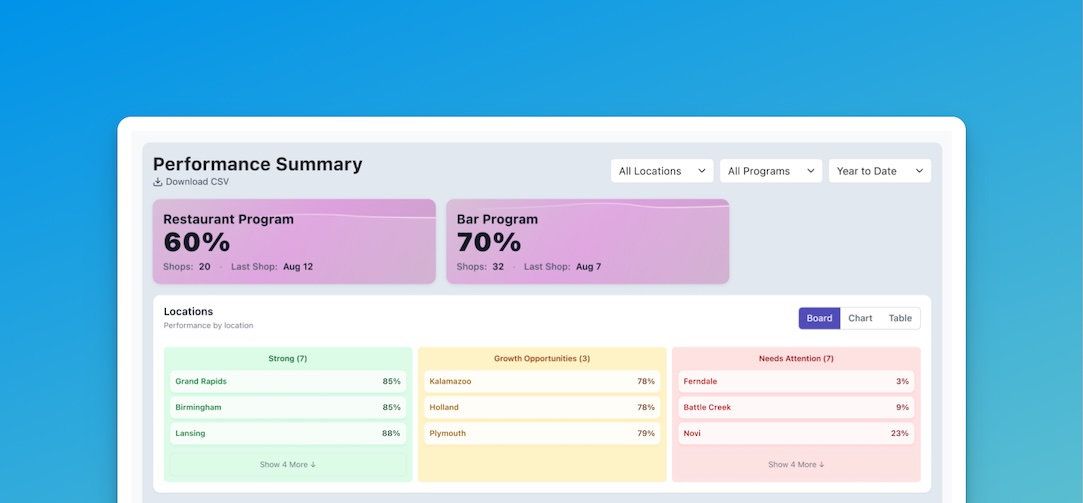
Many small companies focus on delivering great customer service but they often overlook the bigger picture: customer experience. While these terms are closely related they’re not the same—and in today’s competitive landscape you must master both to make a real impact.
Great customer experience (CX) is about more than just handling issues and complaints when they come in. It’s about building strong relationships fostering customer loyalty and driving long-term growth. With a great CX strategy you’re actually working proactively toward a smooth mutually-beneficial relationship. Then when issues and complaints do come in—as they always will—you’ll be in a much better position to resolve them quickly and positively.
In this article we’ll take a close look at the differences and overlaps of customer service and customer experience. That way you’ll be more prepared to create or refine a comprehensive CX strategy for your business.
Customer Service vs. Customer Experience: What’s the Difference?
As they say knowledge is power. So now that we’ve set the stage let’s take a look at both of these key concepts in more detail—and the value they hold for your business.
Customer Service
Most average consumers are familiar with customer service. They’re the folks you call when the new kitchen tool you ordered comes out of the box with a busted plug—or you can’t figure out how to make it work at all. Essentially this involves the direct support a business provides to its customers albeit sometimes on a bigger scale than one blender. It includes answering inquiries resolving complaints and offering assistance. Sometimes customer service representatives will even offer upgrades add-ons or other changes in service that might better meet the client’s needs.
In any case customer service is mainly reactive in nature—meaning it typically happens in response to a customer’s request.
Customer Experience (CX)
On the other hand customer experience is the bigger picture—of which customer service is just one part. Customer experience is the collection of interactions that businesses have with potential and current clients. It encompasses every communication touchpoint from first impressions and value propositions to payment processing and the delivery of products and services. And yes part of that is customer service.
As opposed to the pillar that is customer service customer experience is proactive in nature. It also focuses on the overall impression and sentiment of clients and prospects. What is the public perception of your brand? Do they believe it has value for their life? How do they feel about the service they receive? Managing customer experience means curating these aspects to optimize profitability and customer satisfaction.
Why Small Businesses Should Prioritize Both
Think of it this way: customer service is one leg of the table and customer experience is the entire piece of furniture. Without customer service the table would collapse. But without the other aspects of the customer experience there wouldn’t be much of a table at all—perhaps just a few pieces of wood lying on the ground. In other words not very useful or productive.
Furthermore in today’s market consumers expect even higher levels of customer service than ever because they want to find intuitive instantaneous and impeccable results no matter where they shop. A single frustrating interaction or negative online review can make a shopper reconsider their entire relationship with your company. But when businesses combine top-notch customer service with a seamless customer experience they create powerful advantages:
Stronger Customer Loyalty
When clients feel valued and supported at every stage from the first touchpoint on they’re more likely to stay with you than switch to competitors. After all they’ll expect nothing less than everything they want and need. And if they don’t get it from you they know there’s certainly someone else who will.
Higher Customer Lifetime Value (CLV)
Businesses that prioritize CX often see higher repeat business and more profitable deals from satisfied customers. That’s because customers value strong relationships—so if they’re getting one service from you and enjoy the results they’ll choose to get add-ons from you instead of bothering to look somewhere else.
Competitive Differentiation
In crowded markets a great customer experience can be a key differentiator that sets your company apart. After all support often happens during moments of crisis. If they believe you’ll handle their issues efficiently effectively and effortlessly they’ll know they can trust you no matter what comes.
How to Improve Both Customer Service & Customer Experience
If you’re looking to streamline and support your customer service and customer experience you’re in the right place. In this section we’ll take a closer look at five best practices that can help you get your CX and customer service working together like a well-oiled machine.
1 - Be Proactive Not Just Reactive
There are many occasions when being proactive about your customer experience can actually lower the need for customer service. For example if you take the time to educate new customers on how your products and services work chances are they won’t need to rely on customer service to answer repetitive questions.
When you think about the customer journey as a whole—and consider what information and resources clients will benefit from early on—it’s possible to streamline the whole process. Additionally this will lessen the burden on customer service so you can get back to delivering on your promises. That way when the inevitable legitimate crisis occurs you can build on the relationship you’ve already established and tackle the issue together.
2 - Simplify the Buying Process to Support Customer Service
Many customer service issues are focused on the actual buying process itself. Once a consumer has committed to your value proposition don’t delay the transaction any more than you have to. Otherwise you could lose a sale.
To optimize this process ensure your website ordering system and communication channels are as user-friendly as you can make them. Then regularly evaluate the process so that you can find more ways to reduce friction and make improvements. You can do the same for every aspect of your customer-facing operations.
3 - Train Your Team for a Customer-Centric Mindset
Similarly empower your employees to go beyond simply fixing issues as they arise. Customer service and customer experience work best when the whole team is focused on providing support. Therefore encourage them to build strong strategic relationships with people and leverage that to provide proactive solutions.
Furthermore invest in ongoing training for both customer service representatives and sales teams. This will help everyone buy into the philosophy of continual improvement boost team cohesion and morale and put it into action.
4 - Close the Feedback Loop
One of the most valuable sources of business data comes from customer feedback—and unfortunately many companies downplay its importance. Of course this is understandable as negative feedback can seem overly critical counterproductive or even worthless. However there is plenty of relevant strategic information out there that only your customers can provide. Therefore closing the feedback loop can be a great way to boost both customer service and overall customer experience.
How do you do this? First be open and take customer feedback at face value… with a grain of salt. Actively respond to comments in a positive manner that reflects your brand—even with those negative troll-worthy comments. Finally take what you can from the interaction and implement changes based on customer needs adapting your customer experience as necessary.
Additionally it’s good to regularly request feedback especially from satisfied customers. If anything positive comments can be repurposed into glowing testimonials to feature on your website. In the best cases they’ll suggest missed opportunities that you can capitalize on boosting your profitability across the board. With this strategy you’re continuing in the proactive customer-centric mindset gathering great data and improving business all at the same time.
5 - Review Reflect & Improve Your Customer Service
Your business should also be in the practice of regularly evaluating operations for yourselves. Certainly client feedback is invaluable especially in terms of customer service. But in the end you know what your goals are for your business and your customers—and what you’re capable of. To that end reviewing reflecting and improving upon your business model is a powerful method of supporting both your CX and your customer service.
You’ll likely benefit from external evaluation as well. Consider starting or supporting a CX evaluation program with a platform like CustomerOptix’s CX On Demand. With our network of expert evaluators we can conduct targeted mystery shops anytime you need. Plus it’s affordable flexible scalable—and fast. And you can count on quality objective and actionable data every time. Your operations are sure to see significant results on every front.
The Dream Team: Customer Service and Customer Experience
In today’s world customer service alone isn’t enough—and neither is solely outward-focused customer experience. Both must be combined to produce a big-picture CX strategy that will continually optimize your business operations. Small businesses that focus on both will create stronger client relationships boost revenue and gain a significant edge over competitors.
By shifting from a reactive service-focused mindset to a proactive experience-driven approach your business can turn every customer touchpoint into an opportunity to impress convert and retain loyal shoppers.
Subscribe to the Buzz
Receive exclusive insights, tips, and customer experience strategies straight to your inbox.







